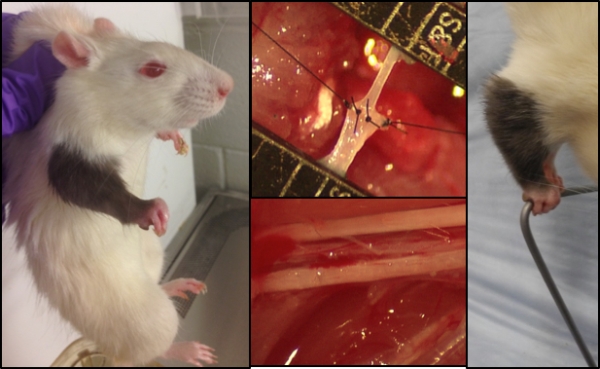A Novel Murine Orthotopic Forelimb Transplantation Model That Allows for Reliable Assessment of Post-Transplant Upper Extremity Function.
1Plastic Surgery, Johns Hopkins Medical Institutions, Baltimore, MD
2Transplant Surgery, Medical University of Innsbruck, Innsbruck, Austria.
Meeting: 2016 American Transplant Congress
Abstract number: 375
Keywords: Graft function, Outcome, Rat
Session Information
Session Name: Concurrent Session: Allograft Tolerance 2: Animal Models
Session Type: Concurrent Session
Date: Tuesday, June 14, 2016
Session Time: 2:30pm-4:00pm
 Presentation Time: 3:30pm-3:42pm
Presentation Time: 3:30pm-3:42pm
Location: Room 309
Background: Studies related to functional return for upper extremity transplantation have been limited by the lack of a functional VCA animal model. The rat hindlimb transplant model has been used for this purpose but it does not allow for reliable assessment of behavioral functional recovery. We developed a novel forelimb transplant model to address this specific problem.
Methods: Allogeneic (Brown Norway to Lewis) and syngeneic (Lewis to Lewis) orthotopic forelimb allotransplantations were performed at mid-humerus level, with anastomosis of the brachial artery and vein. Two syngeneic sub-groups were studied to determine the degree of functional return due to nerve regeneration. In the experimental group, median, ulnar and radial nerves were approximated, but left in discontinuity in the control group (N=6/group). Functional recovery was tested by measuring grip strength using a force transducer and evaluating performance of complex hand movements during consumption of food pellets. Median nerve histomorphometry and flexor digitorum myofiber cross-sectional area analysis were performed at 12 weeks.
Results: Long-term allograft survival (>120 days) was successfully achieved with cyclosporine A (10mg/kg/day). Animals in the control group did not regain grip strength after transplantation, while the experimental group demonstrated 52%±5.5% return of baseline grip strength (p<0.05). Forelimb function scores (0-9) showed greater functional return of the transplanted limb in the experimental group compared to the control group. (3.7±0.49 vs. 1.2±0.37; P<0.05). Immunohistochemistry of flexor digitorum muscle showed greater myofiber cross-sectional area in the experimental group than in the control group. (719.5±56.9 vs. 224.7±38.7[micro]m2; P<0.0001)
Conclusion: The rat forelimb transplantation represents the first VCA model that allows for reliable and reproducible measurement of functional recovery after upper extremity transplantation.
CITATION INFORMATION: Budihardjo J, Kern B, Mermulla S, Quan A, Cadmi C, Lopez J, Park J, Hoke A, Lee W, Tuffaha S, Brandacher G. A Novel Murine Orthotopic Forelimb Transplantation Model That Allows for Reliable Assessment of Post-Transplant Upper Extremity Function. Am J Transplant. 2016;16 (suppl 3).
To cite this abstract in AMA style:
Budihardjo J, Kern B, Mermulla S, Quan A, Cadmi C, Lopez J, Park J, Hoke A, Lee W, Tuffaha S, Brandacher G. A Novel Murine Orthotopic Forelimb Transplantation Model That Allows for Reliable Assessment of Post-Transplant Upper Extremity Function. [abstract]. Am J Transplant. 2016; 16 (suppl 3). https://atcmeetingabstracts.com/abstract/a-novel-murine-orthotopic-forelimb-transplantation-model-that-allows-for-reliable-assessment-of-post-transplant-upper-extremity-function/. Accessed December 15, 2025.« Back to 2016 American Transplant Congress
